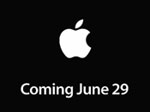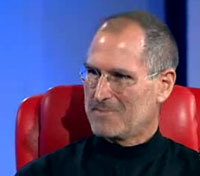 Babelgum, the p2p online video service which is inevitably being compared to Joost (see our preview) is to begin opening its Beta to the public. Existing testers can now invite others, and the company’s website is offering sign-ups on a limited first come first served basis, each day.
Babelgum, the p2p online video service which is inevitably being compared to Joost (see our preview) is to begin opening its Beta to the public. Existing testers can now invite others, and the company’s website is offering sign-ups on a limited first come first served basis, each day.
From the official Babelgum blog:
It has taken a few more days than expected but we are finally there! Today we are launching our open beta phase, with a brand new release of the Babelgum client, involving a major rewrite to improve performance and several new features. The release will also showcase hundreds of hours of content, with much more to come in the next few weeks.
Previously, we’d noted that Babelgum seemed a lot further behind in the development cycle than Joost, and while today’s update means they’re catching up, it still looks like they have a long way to go to match Joost’s volume of content. Although we also observed that Babelgum maybe embracing more of a niche and open content strategy.
Where Joost has made much of its success in signing up big media partners including MTV, Comedy Central, CNN, Sony Pictures, and CBS; Babelgum’s website hints at a different strategy. By helping niche content find and connect with niche audiences, the company hopes to exploit the “Long Tail”.
If you’d like to get your hands on Babelgum you can try your luck on the site’s download lottery, which the company says is necessary to keep “growth pace under control” until they’ve tested their new infrastructure and feel confident enough “to fully open the download floodgates.”
 Earlier in the week Joost, the online TV service from the founders of Skype (
Earlier in the week Joost, the online TV service from the founders of Skype ( It’s common for new technology to press the boundaries of what’s permissible under current intellectual property laws or to challenge existing business models — or both — and
It’s common for new technology to press the boundaries of what’s permissible under current intellectual property laws or to challenge existing business models — or both — and 

 When Walt Mossberg
When Walt Mossberg  When Steve Jobs demoed the AppleTV’s
When Steve Jobs demoed the AppleTV’s  At yesterday’s D: All Things Digital conference
At yesterday’s D: All Things Digital conference  Users who purchase DRM-free tracks from Apple’s
Users who purchase DRM-free tracks from Apple’s  “We’re in two businesses today, we’ll very shortly be in three, and a hobby”, Apple’s CEO Steve Jobs told Walt Mossberg in an on-stage interview at yesterday’s D: conference. The first two are computers and digital music (iPod/iTunes), and the third will be the cell phone market which Apple will enter next month with the launch of the iPhone. And the hobby? The company’s recently released set-top-box, the AppleTV.
“We’re in two businesses today, we’ll very shortly be in three, and a hobby”, Apple’s CEO Steve Jobs told Walt Mossberg in an on-stage interview at yesterday’s D: conference. The first two are computers and digital music (iPod/iTunes), and the third will be the cell phone market which Apple will enter next month with the launch of the iPhone. And the hobby? The company’s recently released set-top-box, the AppleTV.